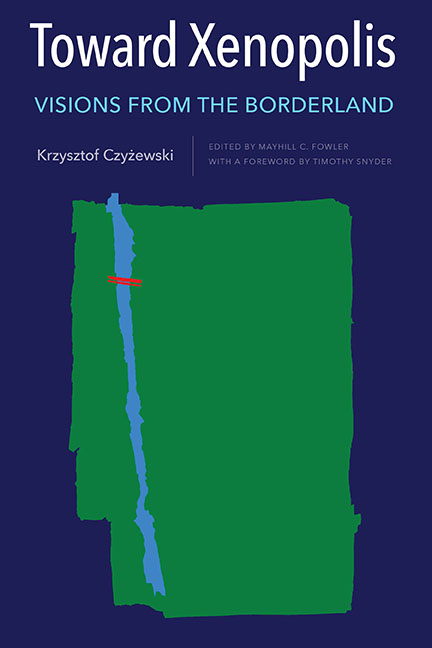Czerniowce/Chernivtsi/Czernowitz: A Forgotten Metropolis
Published online by Cambridge University Press: 16 July 2022
Summary
To get there, the European will have to head east. He can make his way to L’viv, and from there it is only about 300 kilometers by the shortest automobile route, through Ivano-Frankivs’k (which not so very long ago was Stanisławów) and Kolomyia. Unless, that is, he is lured by the mountain charms of the East Carpathians, in which case he will go through Verchovyna (formerly Żabie), Kosiw, and Vyzhnytsia. Even so, he will have to reach the Prut River and cross it. The roads from the southwest lead this way as well, through Transylvania to Suceava, the capital of Romanian Bukovina. From that point it is only 90 kilometers, but there remains the challenge of getting through the new (post-1945), strongly guarded border crossing between Romania and Ukraine (initially one of the “borders of friendship” between the USSR and Romania).
There remains to be mentioned, finally, an ancient Black Sea trail leading from Northern Europe to Constantinople, which at the beginning of our millennium was trodden by Armenian, Jewish, German, and Polish merchants, as well as various emissaries and spies of the Byzantine emperors and Turkish sultans, missionaries from quarrelsome competing churches, and the scions of noble and bourgeois families sent to Kraków, or even further, for an education. Today this trail is dominated by innumerable hordes of traders from the former “socialist camp” countries, who, thanks to their incredible perseverance, to their expertise in forcing distinctly unfriendly border crossings, and to their skill, polished to perfection, of stuffing enormous quantities of smaller and larger goods into small automobiles, into enormous duffel bags carried on their own backs, and finally into their own clothing, whose capaciousness would appear to be limitless—thanks indeed to all this, they indefatigably fill up the new bazaars and markets that continually spring up along this trail like so many mushrooms after a rainstorm. We have been told that in the place where we are going there is the second largest bazaar in this part of Europe, after the gigantic stadium in Warsaw.
No matter from what direction we approach, we arrive at the same northeast outpost of the Carpathians. The mountains, to the last slopes of which the city is nestled, constitute its strong support, a prop against Europe, with which the bond was maintained through these Carpathian passes.
- Type
- Chapter
- Information
- Toward XenopolisVisions from the Borderland, pp. 67 - 82Publisher: Boydell & BrewerPrint publication year: 2022

